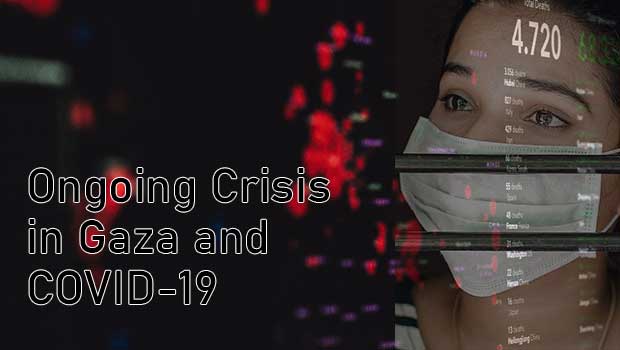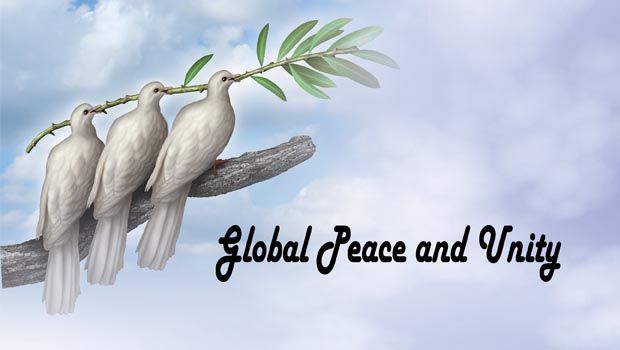Life in the besieged Gaza Strip has always been a struggle, to put it mildly. Closed off from the outside world, by Egypt on one end and by Israel on the other, and blockaded by air, land, and sea. Its people have no control over their coastal waters, airspace, borders, commerce, population registry, or taxation system. And until recently, as an unintended consequence of the blockade, a literal collective quarantine, it had been largely spared the fate of the coronavirus infected globe.
It was only a matter of time, however, until the virus found its way in — most likely by way of the limited people traveling in and out through the Rafah crossing, as well as businessmen and international aid workers traveling through the Beit Hanun crossing to the north. Local authorities, in conjunction with international organizations and local NGOs in the occupied territory, are acting quickly to contain the spread of the virus as it could have a devastating impact in a place like Gaza if left unchecked.
There are nearly 2 million people residing in the Gaza Strip, the majority of whom are refugees or the descendants of refugees forced from their homes in historic Palestine in 1948 by invading Zionist militias. A ten-year-long blockade of the coastal Palestinian territory has plunged the majority of its residents into deep impoverishment and food insecurity, unemployment, and constant socio-economic uncertainty.
Efforts to Contain the Virus
With limited testing capacity, ventilators, and ICU hospital beds, a full-blown outbreak could be catastrophic, and as a result, containment is key to preventing the spread of the coronavirus in Gaza, according to the Ministry of Health officials. A curfew has been imposed on the territory between the hours of 7 a.m. until 8 p.m. since late August, and special permits are required to travel from one area of the Strip to the other, usually reserved for essential workers. Cafes have been ordered to close, and public weddings, a source of contamination, have been temporarily banned. As of the end of September 2020, there have been 2,613 confirmed cases and 21 fatalities, according to government sources. Though the numbers aren’t high by regional standards, due to Gaza’s unique situation and compounding factors, everyone involved has been on high alert.
The situation has taken a toll on residents’ mental health which is a major concern given that two-thirds of Gaza’s children already experience alarmingly high rates of psychosocial stressors and symptoms, according to the Gaza Community Mental Health Programme, which has been providing free telephone consultations and counseling. According to a recent report the group published, there has been an uptick in feelings of isolation, anxiety, and aggression, especially amongst the most vulnerable segments of society, women and children. “It’s like a siege on top of an already existing siege,” noted one resident of southern Gaza, Maram Hamdan, in an interview. “Gaza had become accustomed to a siege, but its people got used to living and loving life, releasing some steam by going to the beach, and so on, but then Corona came and shut down people completely.”
The problem is exacerbated by a lack of clean water in the majority of the strip, making even basic hygiene, necessary to prevent the spread of the virus, difficult. Overcrowding is also a challenge, and compliance has been a struggle in many of the areas' densely populated neighborhoods and refugee camps.
Challenges for the Students
Ibrahim S., 17-years-old, told me over Facebook, “No one listens, and they don’t genuinely understand the threat of this virus. I started sheltering in place the day it was announced 4 students at my school has the virus.” Students of all ages comprise almost half of the population. Sumayya Al-Kutrywith, a 23-year-old student I spoke with, expressed frustration at having to miss many lectures and exams. “If the internet is available, it’s extremely weak and slow. It often turns off completely in the middle of a lesson. We usually have to hope the instructor has recorded the lectures for us so we can watch them later.” She is a fourth-year student of business administration in one of Gaza’s universities.
What’s being overlooked, Sumayya told me in an online interview from her home, is that virtual education in such circumstances is vital, but the digital divide is real, and the vast majority of the population endure 20-hour power outages, without means to pay for backup generators or data for telephones. “The problem is bigger than all of us,” explained Dr. Mona El-Farra, a physician and director of Gaza projects for the Middle East Children’s Alliance there. “The virus has exasperated an already fragile situation.”
Shortages of Medical Equipment
Dr. Ashraf Qidra, spokesman for the Palestinian Ministry of health, emphasized that this point in time was critical to containing the virus and asked that residents comply with sheltering in place orders as well as quarantining for two weeks upon arrival to Gaza from the Rafah Crossing. On September 24, the World Health Organization was able to provide1000 new COVID-19 PCR testing kits, according to the ministry, enough for about 7-12 more days, as well as a one-month’s supply of regular tests. Ventilator machines are available, and more are scheduled to arrive soon, noted Qidra, adding “The real problem is in the shortage of non-invasive ventilation equipment like high flow nasal oxygen canula, BIPAP machines, non-rebreathing oxygen masks, and pulse oximeters.”
The situation has prompted several young enterprising Gazans to manufacture their own face masks, protective suits, and even homemade ventilators. Faced with many shortages and the lack of predictable access to supply chains in the past, Gazans have often needed to innovate. One individual, Mohammed Abu Matar, design engineer and founder of the 3D printing company Tashkeel3D, has made ventilators locally. They cost about $300 but their durability to sustain a patient’s life is limited. Abu Matar cautioned that they have yet to be tested or approved, that they are a stop-gap measure, not a replacement for proper medical equipment. So many of the complications and aspects of the crisis would be eliminated if Israel ended its decade-long siege of Gaza, and relinquished control over the passage of people and goods (including essential supplies and manufacturing components) in and out of the territory.
Under the Fourth Geneva Convention, Israel, as the occupying power, is legally responsible for the well-being of the population of the areas under its control, including Palestinians of the West Bank and Gaza. However, since their 2005 disengagement from Gaza, they have absolved themselves of this responsibility, according to leading human rights organizations such as Gisha and Btslem. In the meantime, NGOs and international aid organizations have had to fill in the gap. They have developed an interagency COVID-19 response plan to oversee everything from distribution of supplies and providing handwashing stations to monitoring educational needs.






